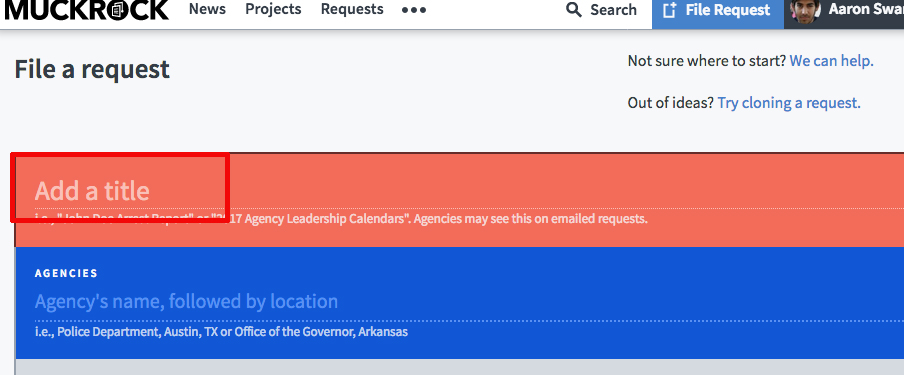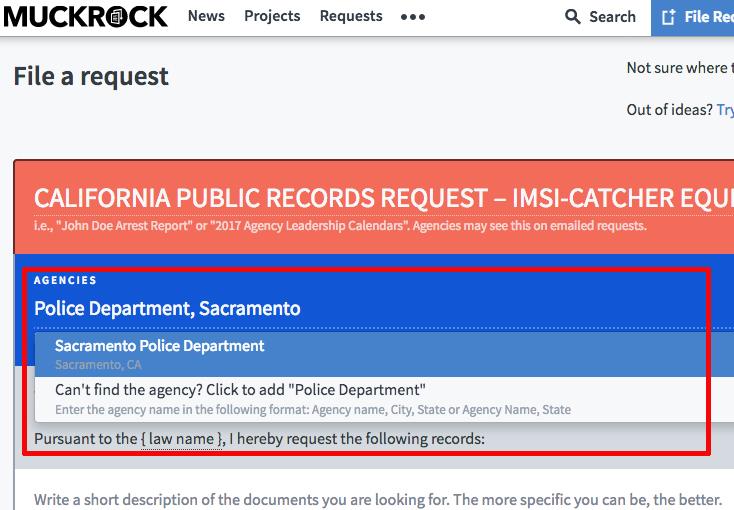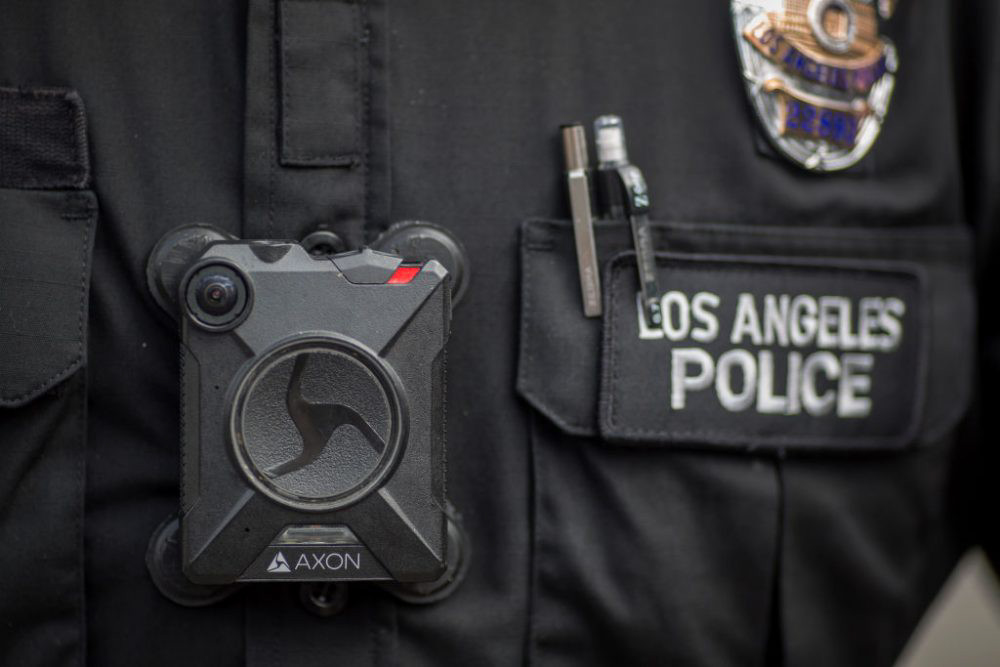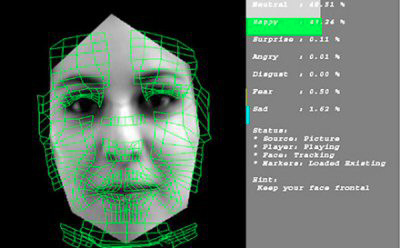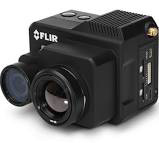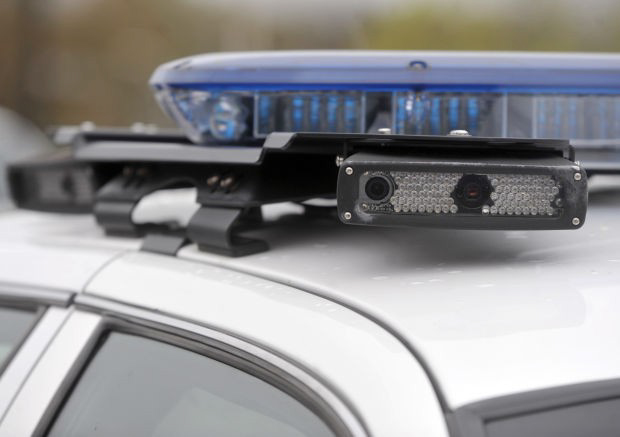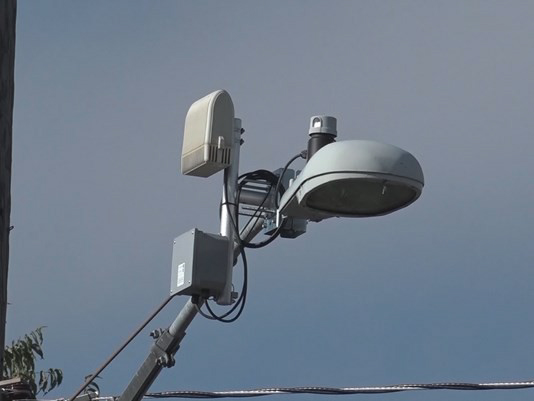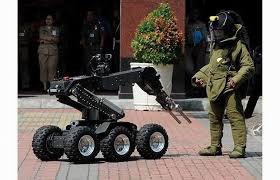Here are our letter templates to help you file 20 different Public Records Requests – in order to determine every piece of surveillance equipment in a given city. (There are only 10 templates, but you’ll be filing 10 with the Police and 10 with the Sheriff.)
The Aaron Swartz Day Police Surveillance Project aims to empower professional journalists and “citizen journalists,” so they can quickly and easily file a large set of public records requests to the Police and Sheriff Departments of a given city.
The Police and Sheriff Departments are required by law to hand over any relevant paperwork, should a member of the public ask the right questions, so, I asked Oakland Privacy’s Tracy Rosenberg to create a complete set of letters, each asking for a specific type of surveillance equipment or software. I believe we have streamlined the process well enough now that we can really make some headway on this thing.
Here is a quick tutorial, below, with easy-to-use letters you can cut and paste into your Muckrock requests and a list of all the surveillance equipment that we are asking about. Special thanks to Muckrock, without which this project would not be possible.
Soon we will have an easy to use table of “what we know so far” by city – linked directly to a zip file of all relevant documents – to make it easy for journalists find the documents they need for whatever story they are researching. Using the table, it is my hope that everything will stay clear and organized as this project moves forward and we begin to add hundreds of cities from across the country.
Here’s a nice interview with Tracy Rosenberg of Oakland Privacy, who created the templates for asking about every kind of surveillance equipment in existence, allowing you to file 20 public records requests in just under two hours.
Here’s how this works:
Here’s the five minute explanation – seriously – just the facts and the templates (Zip of .Doc files) (Zip of PDF Files)- thank you for your time!
1) Create an account on Muckrock.com.
2) After you log in, click on “File Request.”
3) Click on where it says “Add a title” (See picture above.)
4) After opening up one of our templates, cut and paste the subject from our templates, for instance (see picture below):
“CALIFORNIA PUBLIC RECORDS REQUEST – IMSI-CATCHER EQUIPMENT”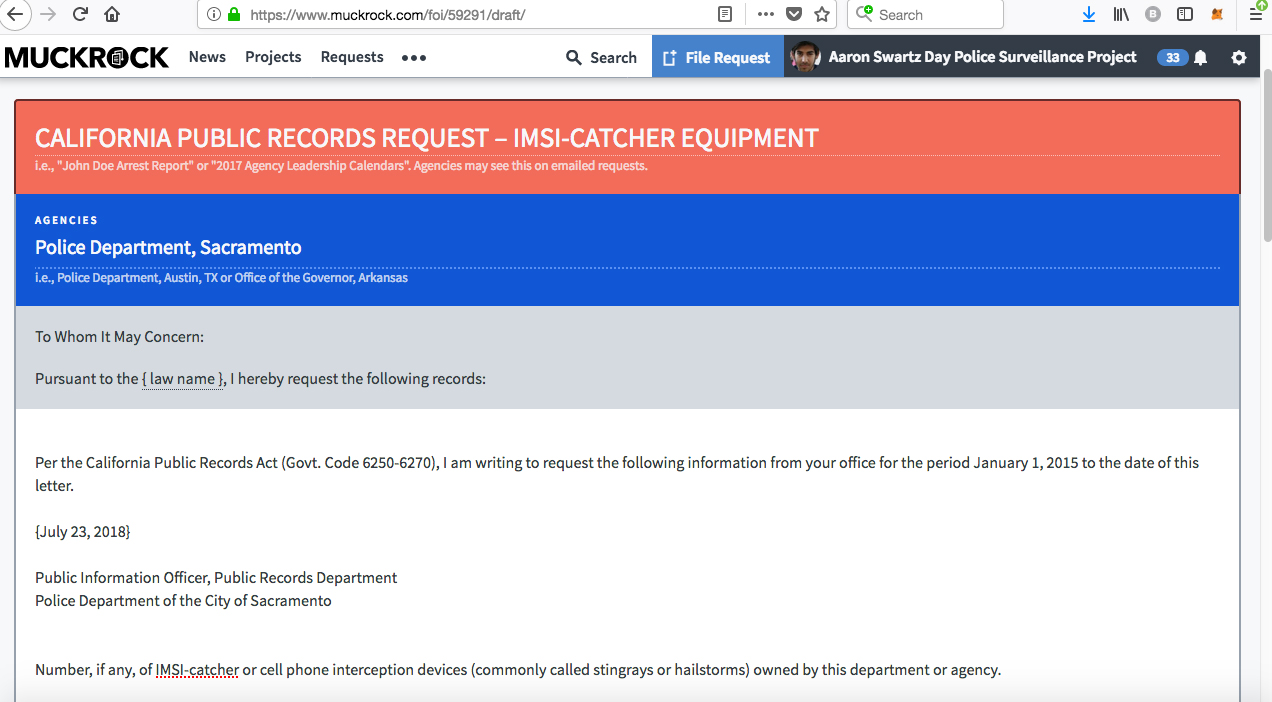
5) Start typing in “Police Department, ” and whatever city you are looking for, you will see the name of the department come up in a list, and you can select it. (See picture below.)
6) Cut and paste from our templates (DOCs) (PDFS) –
Make sure that you are using the POLICE or the SHERIFF version of the letter for each piece of equipment. Make a checklist in case you get interrupted.
7) Paste in the letter and make sure that you fill in the correct DATE and THE CITY or COUNTY you are submitting to.
Note: There is no need to provide a mailing address because Muckrock provides one and will scan your documents and make them available to you when they come in.
8) After a few weeks, the responses will start to come in to your Muckrock account.
9) Download the docs and see what you can find. Here’s Tracy Rosenberg explaining #WhatWeFound in #Sacramento and how to look through the documents.
We are creating a table of cities and surveillance equipment, to help us all keep track of the results, and make it easy for Journalists to go back and find the documents for whichever type of equipment they are researching, quickly and easily. (This way, everything will stay clear and organized as this project moves forward and we begin to add hundreds of cities from across the country.)
We are about to do another group of cities, and are also adding facial recognition software to our template letters.
Special thanks to Muckrock, without which this project would not be possible.
Here’s a list of the equipment we’re asking about in these letters.
ZIP FILE OF .DOC files for ALL 20 LETTERS (FOR BOTH Police and Sheriff – 1 MB)
ZIP FILE OF PDFs of ALL 20 LETTERS (FOR BOTH Police and Sheriff – 1 MB)
Here’s a description of the equipment we are asking about in these letters:
Types of Surveillance Equipment In Use by US Law Enforcement
1. Stingrays (IMSI-Catchers)
One of the most famous pieces of equipment, stingrays (also referred to as IMSI-catcher or cell phone interception devices, impersonate cell phone towers and sweep up targeted communications and those in the vicinity of a target. Stingrays were subject to non-disclosure agreements by chief manufacturer Harris Corp until recently, meaning law enforcement agencies could not disclose their use. Secretive stingray use was rampant for the past 15 years. States and cities have started to finally regulate stingray use with restrictive laws on the books in Oakland, Alameda County and the State of Illinois, to give a few examples.
2. Drones
Drones are also known as Aerial Unmanned Vehicles (UAV’s) and are in use by hobbyists, commercial interests and law enforcement. They have benign uses for search and rescue and fire assistance and less benign uses that can include wide-ranging surveillance of public spaces. Drones can also be weaponized with rubber bullets, tasers, tear gas, or bombs.
3. Body Cameras
Body worn cameras are affixed to police officers and record interactions on video. The big manufacturers are Axon-Taser and Vievu. Some anti-police brutality groups have heavily advocated for the use of body cameras by police to increase transparency about use of force encounters. Most urban police departments now have them, but problems are already starting to emerge about officers failing to turn them on, who has access to the videos, storage of the videos and federal agency access to them.
Axon-Taser has also made disturbing statements about monetizing the body camera footage storage they offer by developing a predictive algorithm based on them.
4. Biometrics – Fingerprinting, Iris Scans, Facial Recognition
Biometric identification covers quite a few technologies. Fingerprinting is long-established and the extent of federal access to DMV databases is slowly being uncovered (see The Perpetual Lineup from Georgetown Law). The FBI’s NextGen database is said to possess biometric data on 50% of the US population. Newer techniques include iris scanning (which is both commercially in use and used in law enforcement) and facial recognition software which allows cross-referencing from mug shots, camera footage, and DMV photos into federal databases. Questions for local law enforcement agencies focus on a) their use of Iris Scan and FR software, if any and b) what kinds of biometric data they share with federal agencies and under what circumstances (i.e. reasonable suspicion, probable cause, bulk collection).
5. FLIR
FLIR’s are thermal cameras that can detect heat and motion behind walls. They have benign uses for Fire Departments where they can pick up heat spots. They have less benign uses for trying to determine the location of people inside a building. FLIR’s are frequently used in the air, attached to police helicopters and to drones.
6. Automatic License Plate Readers (ALPR)
Automated License Plate Readers (ALPR) are in use by most municipal police departments. The readers can be attached to a cop car or affixed permanently or temporarily to a traffic light. ALPR’s take quick scans of the license plates of all cars that pass by the reader, recording the time and location. The large numbers of scans are generally then sent to a local Department of Homeland Security fusion center (here in Norcal, it’s NCRIC) which stores them for periods of time that can be as long as a year.
ALPR images can sometimes capture people inside or in the vicinity of a motor vehicle as well.
7. Sound Detection Systems (ShotSpotter)
Gunshot or Sound Detection Systems are microphones installed in public spaces that are set up to detect loud noises that resemble gunshots and send back a time and location report to local law enforcement. Shotspotter is the primary brand, although there are others. Gun detection microphones are usually set up in poor communities of color and increase the already high levels of over-policing in those neighborhoods. The systems have high false positive rates (68% was documented in East Palo Alto) and are often set off by things like firecrackers. Shotspotter Inc has also expressed interest in developing predictive algorithim services with their saved data.
8. Bomb Robots
Bomb Robots are remote control vehicles largely used to search for bombs, but now being converted for human suspects. The most famous use of a bomb robot was in the 2016 Dallas police killings where the sniper was killed by a bomb robot.
9. Cameras – Still and Video
Surveillance cameras remain popular with the majority in private hands, but significant municipal and law enforcement use. And everyone has their own in their pocket. Issues surrounding video and still camera surveillance use is how images are stored, for how long, is there federal access and what is the relationship between keeping footage for extended lengths of time in law enforcement custody and reasonable suspicion of involvement in criminal activity.
10. RFID/GPS Trackers
RFID is an easily available tracking technology in common use, along with GPS geolocation. Their use in law enforcement operations for mass tracking can be problematic. Proposals have long existed to outfit drivers licenses with RFID chips.
11. Social Media Monitors
Software programs available to law enforcement agencies track social media posts in order to identify and locate based on search terminology. There are several companies, with one of the largest,
Geofeedia, recently declaring bankruptcy. Social media monitoring largely searches data that is within the public sphere, but does so comprehensively and is often used with little oversight or policy
regarding constitutionally protected and First Amendment activities.
